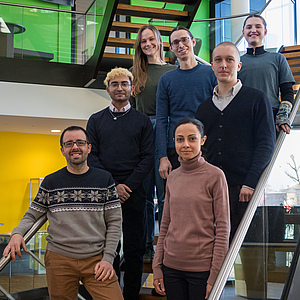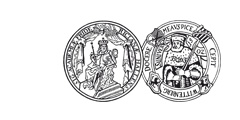Evolution und Biodiversität
Willkommen bei der AG Evolution und Biodiversität! Wir sind zur Zeit am Deutschen Zentrum für Integrative Biodiversitätsforschung (iDiv) Halle-Jena-Leipzig anzutreffen, gelegentlich auch schon in unserer neuen Heimat am Hohen Weg 8 in Halle.
Diese Seiten werden in Zukunft mit mehr Informationen über die Gruppe gefüllt, bis dahin möchten wir auf unseren Webauftritt am iDiv verweisen.

Unsere AG, Januar 2024
Abschlussarbeiten: Informationen für Studierende
Wir sind immer auf der Suche nach Studierenden, die für ihre Abschlussarbeit (Master- oder Bachelorarbeit) ein Projekt bei uns durchführen wollen. Ein Beginn ist prinzipiell jederzeit möglich. Mögliche Themen sind divers und natürlich auch flexibel. Schau am besten zuerst unter dem Link oben um dir einen Überblick darüber zu verschaffen, welche Themen uns interessieren. Konkrete Themenvorschläge findest du weiter unten. Bitte melde dich unverbindlich wenn wir dein Interesse geweckt haben und wir können gemeinsam eurer Projekt planen.
Thema 1: Diversität von Endosymbionten in Neotropischen Insektengemeinschaften
Mehr als die Hälfte aller Insektenarten beherbergt intrazelluläre bakterielle Symbionten, die von Müttern auf ihre Nachkommen übertragen werden. In den allermeisten Fällen ist sind die Auswirkungen der Symbionten auf ihre Wirte unbekannt. Außerdem ist die Diversität der Endosymbionten in manchen Regionen größtenteils unbekannt. In diesem Projekt soll die Diversität der bakteriellen Endosymbionten von Insekten aus verschiedenen Neotropischen Ländern characterisiert werden und mit der von Insekten aus Europa verglichen werden.
Die Methodik für dieses Projekt umfasst molekulargenetische Methoden (DNA Extraktionen, PCRs), neueste Sequenziertechnologien (Oxford Nanopore) sowie etwas Bioinformatik.
Thema 2: Chemische Ökologie von Endosymbiose
Viele Insekten beherbergen bakterielle Symbionten in ihren Zellen, die vielfältige Funktionen übernehmen können. In diesem Projekt sollen Bakterien untersucht werden, die die Fruchtfliege Drosophila melanogaster vor Angriffen parasitischer Wespen beschützen. Da dies von Nachteil für den Fortpflanzungserfolg der Wespe ist würde man erwarten, dass diese Strategien evolviert mit denen sich die Schutzfunktion der Endosymbionten umgehen lassen. Hier soll zunächst getestet werden ob parasitische Wespen das Vorhandensein von schützenden Endosymbionten überhaupt detektieren können. Im zweiten Schritt soll überprüft werden ob Symbionten den "Duft" ihrer Wirte beeinflussen und somit ihre Anwesenheit verraten.
Das Projekt umfasst verhaltensbiologische Experimente sowie gaschromatische Characterisierungen von Oberflächenkohlenwasserstoffen von Drosophila.
Thema 3: Die Evolution von Spiralinen im Endosymbiont Spiroplasma
Spiroplasma ist ein häufiger intrazellulärer Endosymbiont von Drosophila (Fruchtfliegen) und vielen anderen Insekten. Schlüssel zur Interaktion des Symbionten mit seinen Wirten sind Spiraline, eine Klasse von Oberflächenproteinen. In diesem Projekt soll die Diversität der Spiraline in verschiedenen Spiroplasma Stämmen untersucht werden, sowie deren evolutionärer Ursprung geklärt werden. Außerdem soll untersucht werden inwieweit Rekombination und horizontaler Gentransfer die Evolution dieser Proteine prägen und welche andere mobile Elemente (Plasmide, Phagen) möglicherweise dazu beitragen.
Dies ist ein rein genomisches / bioinformatisches Projekt das auf veröffentlichten und unveröffentlichten Daten beruht.
Kontakt
Erfolgt am besten per Email an AG Leiter Jun. Prof. Dr. Michael Gerth: michael.gerth@idiv.uni-halle.de





